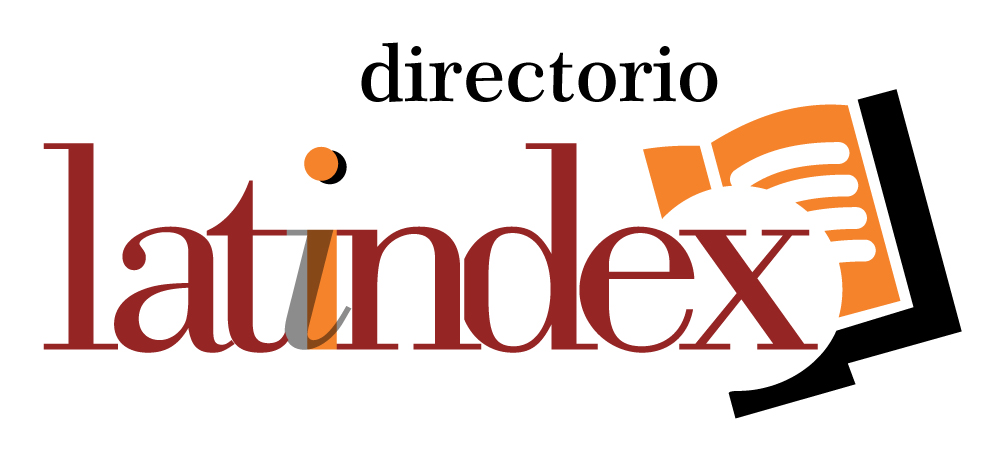Influence of meteorological variables concerning the concentration of particulate material (PM2.5)
DOI:
https://doi.org/10.24221/jeap.10.3.2025.7100.101-108Palavras-chave:
Meteorological variables, particulate material concentration, wind speed, wind direction, current air quality indexResumo
Air pollution is a problem in everyday life, where the advancement of industrialization presents potential exacerbation of emissions levels and atmospheric pollutant concentrations. This study evaluated the influence that meteorological variables, temperature, relative humidity, precipitation, wind speed, and direction, exert on the concentration of particulate matter, especially PM2.5, in urban areas. Procedures involving air quality monitoring data and meteorological data were established over 45 days, utilizing data from monitoring stations for both air quality and meteorology installed nearby to evaluate the mean, average standard deviation, and predominance of the collected values. The results showed how atmospheric dynamics directly influence PM concentration levels, since for wind directions coming from the 1st quadrant (N, NNE, NE, and ENE) with low speeds or equal to zero, concentration levels were high; for winds coming from the 3rd quadrant (S, SSW, SW, and WSW) with elevated speeds or different from zero, concentration levels were low. Thus, it was possible to verify that the dynamics of wind speed and direction should be analyzed together since they depend on each other and proved to be determining factors for PM concentration levels.Downloads
Referências
Akyüz, M.; Çabuk, H. 2009. Meteorological variations of PM2.5/PM10 concentrations and particle-associated polycyclic aromatic hydrocarbons in the atmospheric environment of Zonguldak, Turkey. J. Hazard. Mater., 170, 13-21. https://doi.org/10.1016/j.jhazmat.2009.05.029
Alvares, C. A.; Stape, J. L.; Sentelhas, P. C.; Gonçalves, J. L. de M.; Sparovek, G. 2013. Köppen’s climate classification map for Brazil. Meteorol. Zeitschrift, 22, 711-728. https://doi.org/10.1127/0941-2948/2013/0507
Brasil. 2020. Guia técnico para o monitoramento e avaliação da qualidade do ar. Brasília, DF. 136p.
Brasil, 2018. Resolução CONAMA no 491. Dispõe sobre padrões Qual. do ar. [on line WWW] Available at: https://www.in.gov.br/web/guest/materia/-/asset_publisher/Kujrw0TZC2Mb/content/id/51058895/do1-2018-11-21-resolucao-n-491-de-19-de-novembro-de-2018-51058603. Access at: March 31, 2023.
EPA. 1999. Air Quality Index Reporting, Final Rule. Fed. Regist., 64, 42530-42549.
Galindo, N.; Varea, M.; Gil-Moltó, J.; Yubero, E.; Nicolás, J. 2011. The Influence of Meteorology on Particulate Matter Concentrations at an Urban Mediterranean Location. Water, Air, Soil Pollut, 215, 365-372. https://doi.org/10.1007/s11270-010-0484-z
Ghorani-Azam, A.; Riahi-Zanjani, B.; Balali-Mood, M. 2016. Effects of air pollution on human health and practical measures for prevention in Iran. J. Res. Med. Sci., 21, 65. https://doi.org/10.4103/1735-1995.189646
Gomes, J. F. P. 2010. Poluição Atmosférica, 2a. ed. Polindústria, Porto, Portugal. 268p.
IBGE, 2022. Criciúma. Instituto Brasileiro de Geografia e Estatística. Available at: https://cidades.ibge.gov.br/brasil/sc/criciuma/panorama. Access at: December 17, 2023.
IBGE, 2021. Mapa municipal de Criciúma Instituto Brasileiro de Geografia e Estatística. [on line WWW] Available at: https://www.ibge.gov.br/geociencias/cartas-e-mapas/mapas-municipais/31452-colecao-de-mapas-municipais.html. Access at: March, 18, 2023.
Kanski, A. 2015. The World’s Greenhouse Gas Emissions in One Graphic. The Australian. [on line WWW]. Available at: https://www.theaustralian.com.au/news/the-worlds-greenhouse-gas-emissions-in-one-graphic/news-story/53cee925fd24465b88b8ede1daea85c4Access at: May, 04, 2023.
Kelly, F. J.; Fussell, J. C. 2015. Air pollution and public health: emerging hazards and improved understanding of risk. Environ. Geochem. Health, 37, 631-649. https://doi.org/10.1007/s10653-015-9720-1
Manisalidis, I.; Stavropoulou, E.; Stavropoulos, A.; Bezirtzoglou, E. 2020. Environmental and Health Impacts of Air Pollution: A Review. Front. Public Heal, 8, 1-13. https://doi.org/10.3389/fpubh.2020.00014
Miraglia, S. G. E. K.; Gouveia, N. 2014. Custos da poluição atmosférica nas regiões metropolitanas brasileiras. Ciência & Saúde Coletiva, 19, 10, 4141-4147, http://dx.doi.org/10.1590/1413-812320141910.09232014
Rigo, D. S.; Colombo, R.; Grub, J. 2008. A real problematização e controle da poluição atmosférica no Brasil. In: 1° Congresso Internacional de Tecnologias para o Meio Ambiente, Bento Gonçalves, RS, pp. 1-8.
Squizzato, R.; Nogueira, T.; Martins, L. D.; Martins, J. A.; Astolfo, R.; Machado, C. B.; Andrade, M. F.; de Freitas, E. D. 2021. Beyond megacities: tracking air pollution from urban areas and biomass burning in Brazil. npj Clim Atmos Sci, 4, 17. https://doi.org/10.1038/s41612-021-00173-y
Souza, N. F. 2010. A qualidade do ar em Morro da Fumaça e seus efeitos sobre a saúde da população. Universidade Federal de Santa Catarina - UFSC, Florianópolis, SC. 80p.
Tai, A. P. K.; Mickley, L. J.; Jacob, D. J. 2010. Correlations between fine particulate matter (PM2.5) and meteorological variables in the United States: Implications for the sensitivity of PM2.5 to climate change. Atmos. Environ. 44, 3976-3984. https://doi.org/10.1016/j.atmosenv.2010.06.060
USEPA, 2018. 454/B-18-007: Technical Assistance Document for the Reporting of Daily Air Quality – the Air Quality Index (AQI). 17p.
Wang, J.; Ogawa, S. 2015. Effects of Meteorological Conditions on PM2.5 Concentrations in Nagasaki, Japan. Int. J. Environ. Res. Public Health, 12, 9089-9101. https://doi.org/10.3390/ijerph120809089
Wang, J.; Wang, Y.; Liu, H.; Yang, Y.; Zhang, X.; Li, Y.; Zhang, Y.; Deng, G. 2013. Diagnostic identification of the impact of meteorological conditions on PM2.5 concentrations in Beijing. Atmos. Environ., 81, 158-165. https://doi.org/10.1016/j.atmosenv.2013.08.033
Wood, D. A. 2022. Trend decomposition aids forecasts of air particulate matter (PM2.5) assisted by machine and deep learning without recourse to exogenous data. Atmos. Pollut. Res., 13, 101352. https://doi.org/10.1016/j.apr.2022.101352
Wrege, M. S.; Steinmetz, S.; Reisser Júnior, C.; Almeida, I. R. 2012. Atlas climático da região sul do Brasil, 2a. ed. Embrapa, Brasília, DF. 333p.
Downloads
Publicado
Como Citar
Edição
Seção
Licença
Copyright (c) 2025 Carlos Henrique Devilla Marcello, Emily Saviatto, Alexandre Zaccaron, Marta Valéria Guimarães de Souza Hoffmann, Paula Tramontin Pavei, Michael Peterson

Este trabalho está licenciado sob uma licença Creative Commons Attribution-NonCommercial-ShareAlike 4.0 International License.
Material protegido por direitos autorais e plágio. No caso de material com direitos autorais ser reproduzido no manuscrito, a atribuição integral deve ser informada no texto; um documento comprobatório de autorização deve ser enviado para a Comissão Editorial como documento suplementar. É da responsabilidade dos autores, não do JEAP ou dos editores ou revisores, informar, no artigo, a autoria de textos, dados, figuras, imagens e/ou mapas publicados anteriormente em outro lugar. Se existir alguma suspeita sobre a originalidade do material, a Comissão Editorial pode verificar o manuscrito por plágio. Nos casos em que trechos já publicados em outro documento for confirmado, o manuscrito será devolvido sem revisão adicional e sem a possibilidade de nova submissão. Autoplágio (ou seja, o uso de frases idênticas de documentos publicados anteriormente pelo mesmo autor) também não é aceitável.
Direitos autorais: Autor
Material protected by copyright and plagiarism rights. In the case of copyrighted material being reproduced in a manuscript, full attribution should be informed in the text; an authorization document is proving to be sent to the Editorial Board as a supplementary document. It is the responsibility of the authors, not JEAP or editors or reviewers, to inform, in the article, the authors of texts, data, graphics, images and maps previously published elsewhere. If there is any suspicion about the originality of the material, the Editorial Board can check the manuscript for plagiarism. Where plagiarism is confirmed, the document will be returned without further review and the possibility of a new submission. Self-plagiarism (i.e., the use of the same phrases previously published documents by any of the authors) is not acceptable.
Copyright: Author






